Interdisciplinarity and impact shine at Duke Research and Innovation Summit 2025
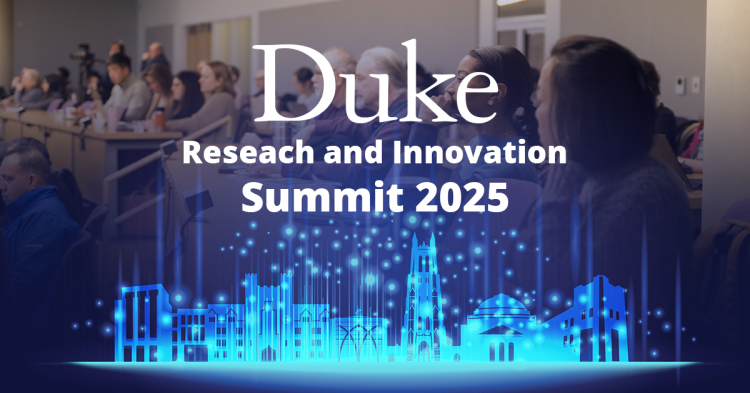
The morning of January 7th, attendees gathered at the Duke Research and Innovation Summit 2025, hosted by the Duke University Pratt School of Engineering.
Jennifer Lodge, VP for Research & Innovation, explained that although the format had changed from the weeklong gathering of years past to an energetic and condensed single day summit, the goal remained the same: “To bring together our thought leaders, researchers, and innovators to dive into today’s most pressing challenges, and how we – the Duke research community – can explore transformative solutions to climate, social health, and other topics impacting local and global communities.”
More about Lodge’s speech, including awards given out, is covered in this Duke Today article.
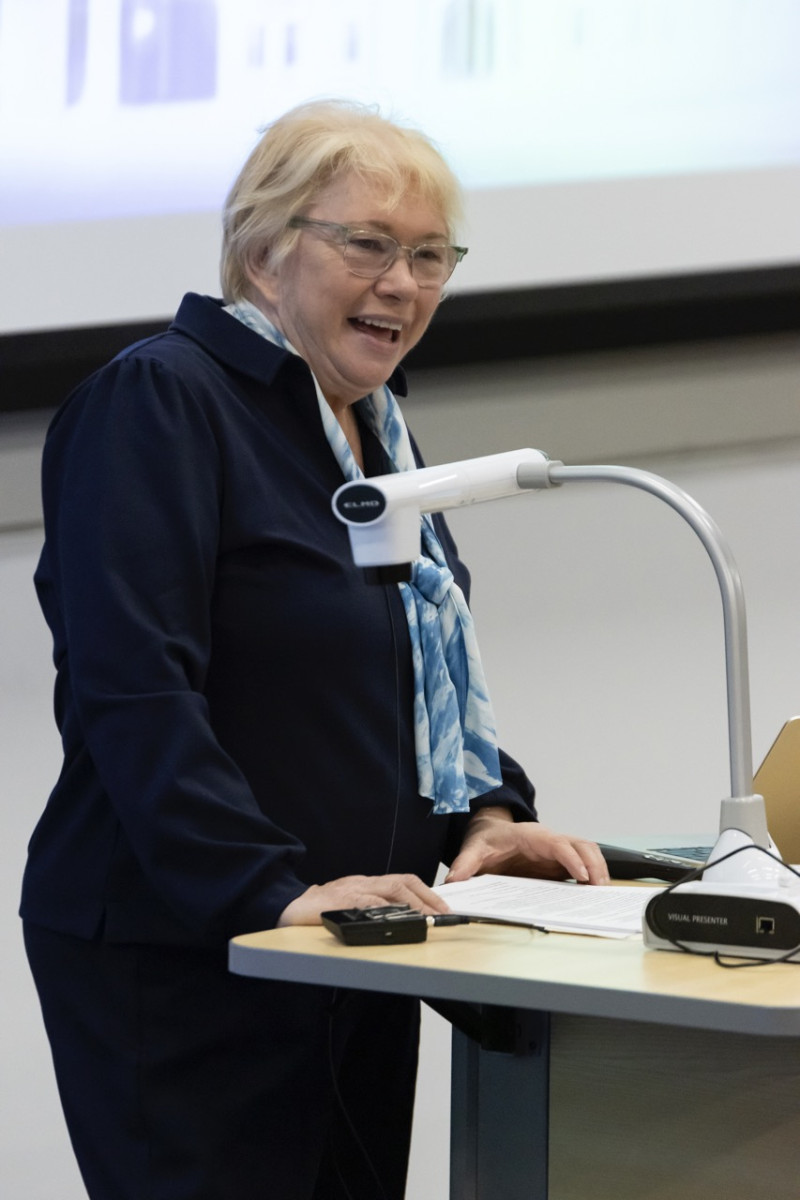
Lodge and her team put together three tracks of interdisciplinary panel discussions that ran concurrently throughout the day:
• Climate and the environment
• Digital health and social determinants
• Societal impact
“Since 2006, the FDA has approved seven drugs that have their roots in Duke intellectual property,” said Lodge, highlighting the societal impact Duke research has made. “This is remarkable. Many universities would be thrilled to have just one.”
“It’s not too difficult to identify a significant clinical need, but I think recognizing what’s a good hit in the context of that need actually takes a skillset and experience,” said David Ashley, Director of the Preston Robert Tisch Brain Cancer Center.
Ashley was one of the panelists in the societal impact session titled Case Studies in Commercialization: Innovations that have Made an Impact. He discussed the long timescales for bringing medical products – specifically, pharmaceuticals like Voranigo, a brain cancer drug based on Duke IP and approved by the FDA in 2024 – out from a university lab and into the real world.
Duke is a great place to do this kind of innovative work because of the interdisciplinary energy at the university, something fellow panelist Cynthia Ann Toth, Joseph A.C. Wadsworth Distinguished Professor of Ophthalmology, described discovering earlier in her career.
“We’d actually develop stuff in the basement,” she said. “We’d clean it, get it cleared for surgery, then take it up, test it in the OR, come back down, and revise. This was back in the early 90s.”
Ken Gall, Professor in the Thomas Lord Department of Mechanical Engineering and Materials Science, also highlighted how Duke continues to champion innovation in research at the institutional level. When Gall was being recruited to Duke to chair the department, he had a specific request he brought up in negotiations.

“I’ll come be the department chair,” Gall recalls saying, “but you have to buy me a metal 3D printer and place it on Duke’s campus.”
Gall is still at Duke and so is the metal 3D printer in Gross Hall, which is available to the Duke community. The machine provided an important prototyping capability for early innovations that spawned restor3d, a 3D-printed metal implant start-up that spun out of Gall’s lab and has stayed in the Durham area.
A few of Alan L. Kaganov Distinguished Professor of Biomedical Engineering Ashutosh Chilkoti’s companies have also stayed in the area. After having some success with big financings of companies quickly spun out with early tech from his lab, Chilkoti now prefers to play the more patient game of developing tech in house for longer and then having a graduating PhD student spin out the company.
“That’s my ongoing experiment in entrepreneurship,” said Chilkoti. “We’ll see where it ends up.”
So far, it has been a success, with one company being acquired and another developing well. More translational funds like the Gilhuly Accelerator Fund within Duke have made this kind of approach more attainable, said panel moderator Robin Rasor, Associate VP for Translation & Commercialization.
“Those translational funds are incredibly important for an early-stage technology that needs to get a little bit farther before it’s investable,” she said.
Learn more about the Gilhuly Accelerator Fund.
A session from the climate track entitled Rising Tides: the Impact of Climate Change on Ocean Ecosystems also featured how Duke research influences society, and vice versa.
Dana Hunt, Associate Professor of Microbial Ecology, shared on the panel that “living on the coast has been eye-opening. I can see sea level rise happening over the 15 years I’ve been at the Marine Lab.”
Conducting research is an iterative process, and panelists shared how their work has changed over time, often based on interactions with those communities affected.
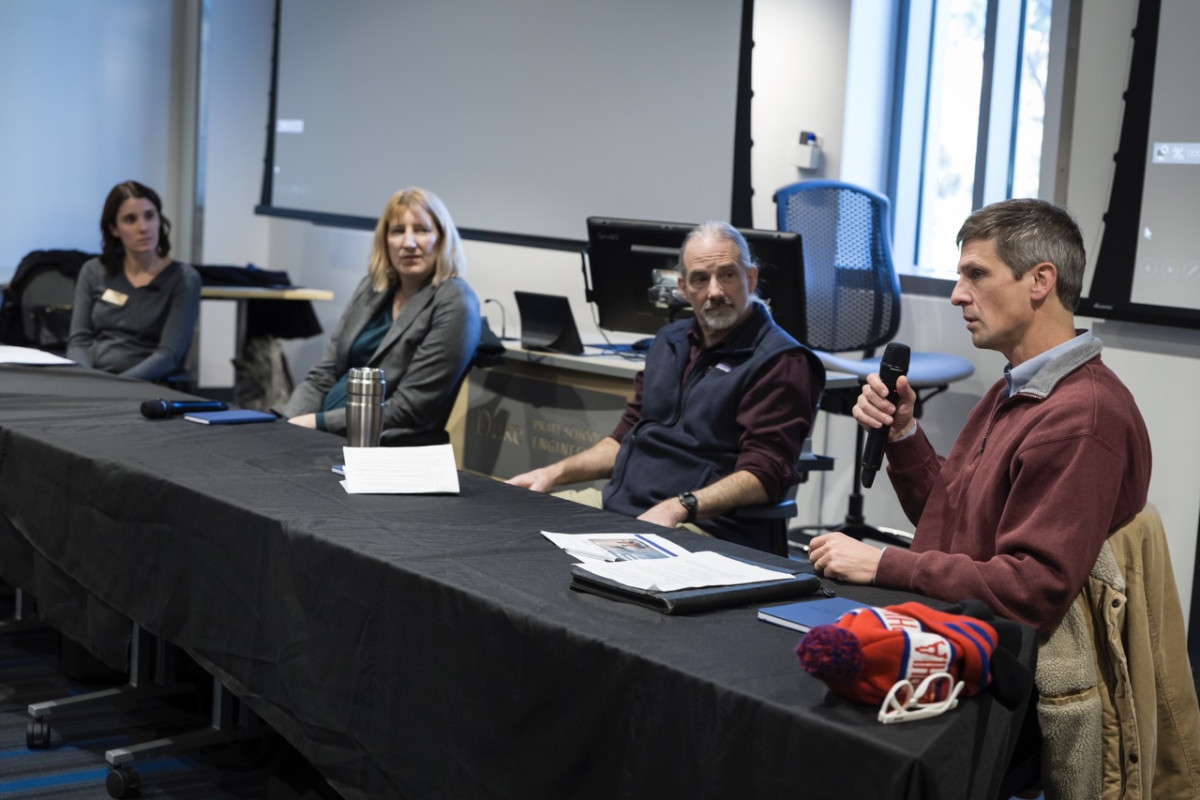
Professor of Geomorphology and Coastal Processes A. Brad Murray shared a unique problem that coastal communities are dealing with he had not expected: “As sea level rises, the water table in terrestrial coastal environments goes up, too. And, so, a lot of septic systems are now, a lot of the time, not above the water table as consistently as they need to be,” which severely impairs the ability of these septic systems to function.
John Virdin, Assistant Professor of the Practice in the Division of Marine Science and Conservation, said his work on small fisheries around the world has given the field new ways to show the impact of local fishers.
“We used to always talk about these fisheries and these systems in economic terms,” he said. “It’s a different conversation about how much nutrition is banked out in the water there for these communities that we didn’t have before.”
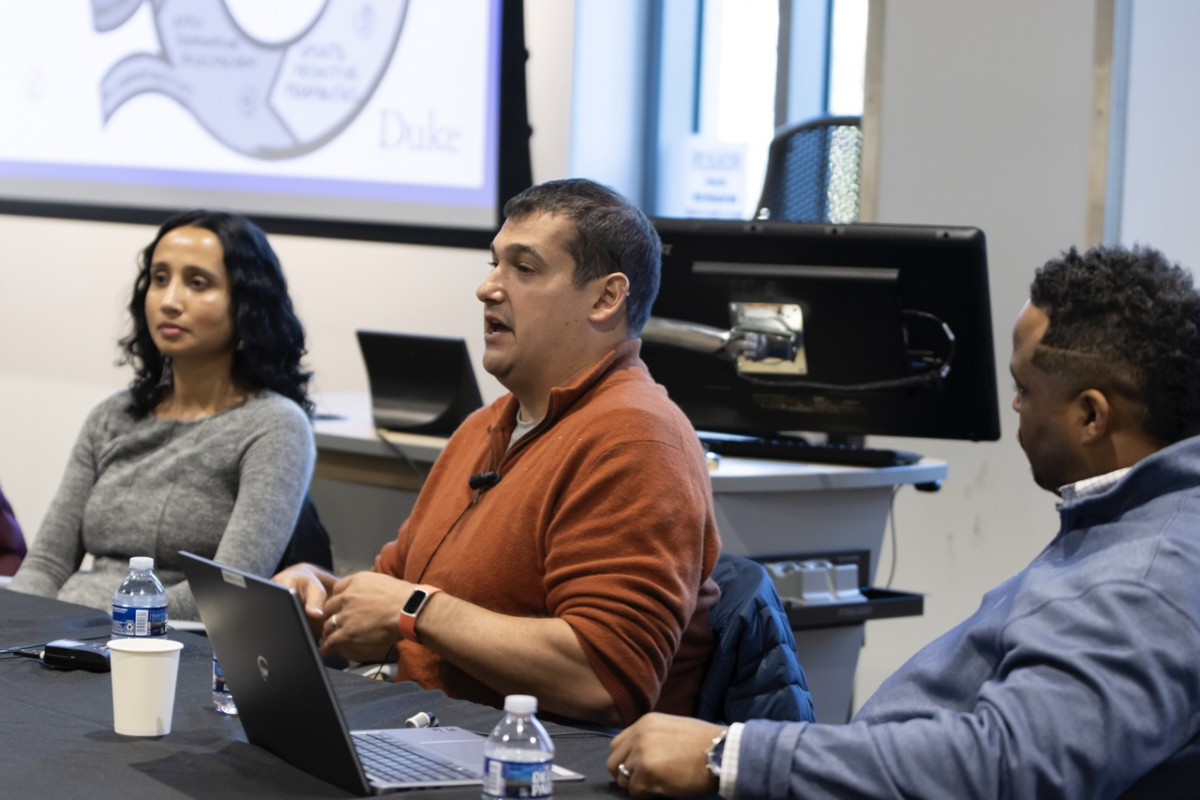
A session from the digital health track entitled Bridging Gaps: AI’s Role in Addressing Health Disparities was also very impact focused.
On the panel, Professor of Biostatistics & Bioinformatics Benjamin Alan Goldstein described building an AI tool that would give Duke nurses a mortality risk rating for their patients.
“The nurses hated the tool. They absolutely hated it, because all they got was a number,” he said. “What I realized was that I was the only one who actually understood the number.”
Goldstein and the other panelists implored innovators to create tools with the actual users in mind.
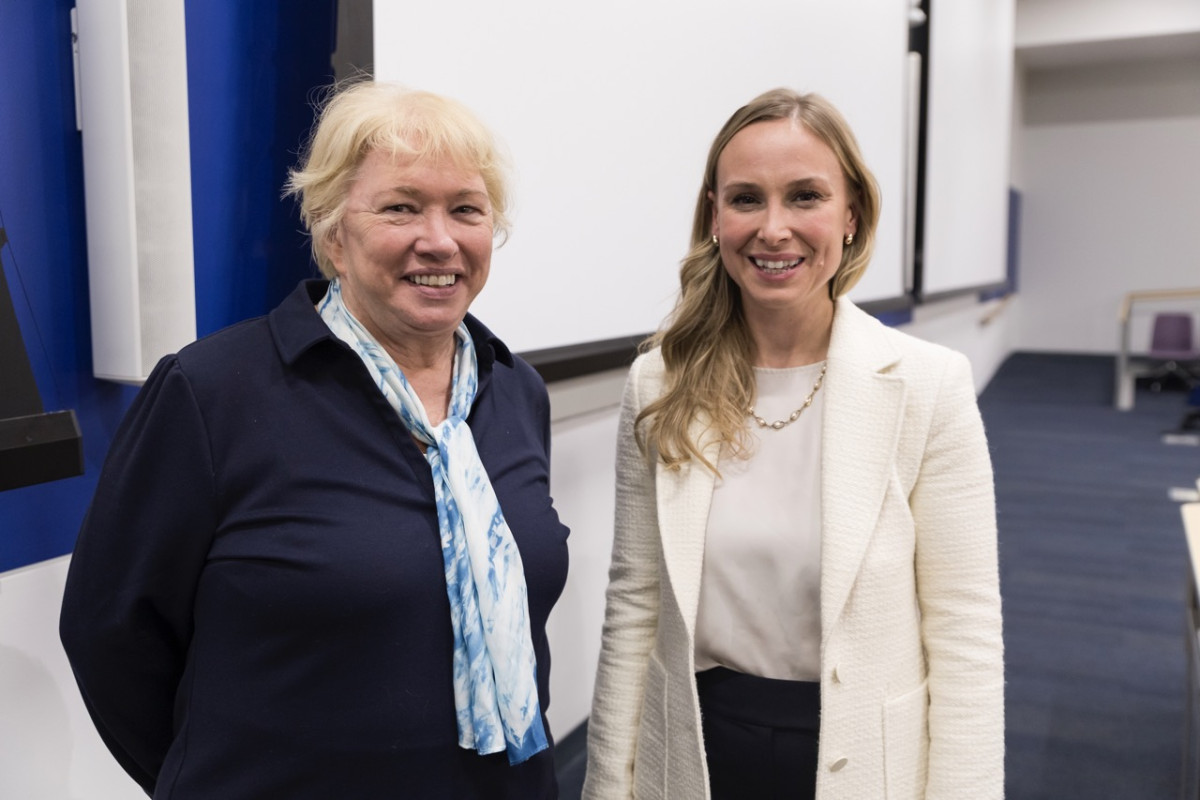
This sentiment was echoed by Jenna Wiens, Associate Professor of Computer Science and Engineering at the University of Michigan, who was the keynote speaker of the Daubechies Lecture at the end of the Summit day.
“I was under the impression that at least 90% of the problem was machine learning,” she recalled thinking fresh out of graduate school. “If I just had the right AI model, the right computational techniques – surely, I’d be able to have the impact that I desire. This is a problem in our field.”
Artificial intelligence tools, like all applied research, have the potential to revolutionize entire fields. However, researchers need to make sure to keep all the stakeholders, especially end users, in mind when translating their lab work into societal impact.
The Duke Research and Innovation Summit 2025 showed a wealth of engaging interdisciplinary work being conducted at the university, and the Office for Translation & Commercialization is eager to support researchers interested in making societal impact with their work.